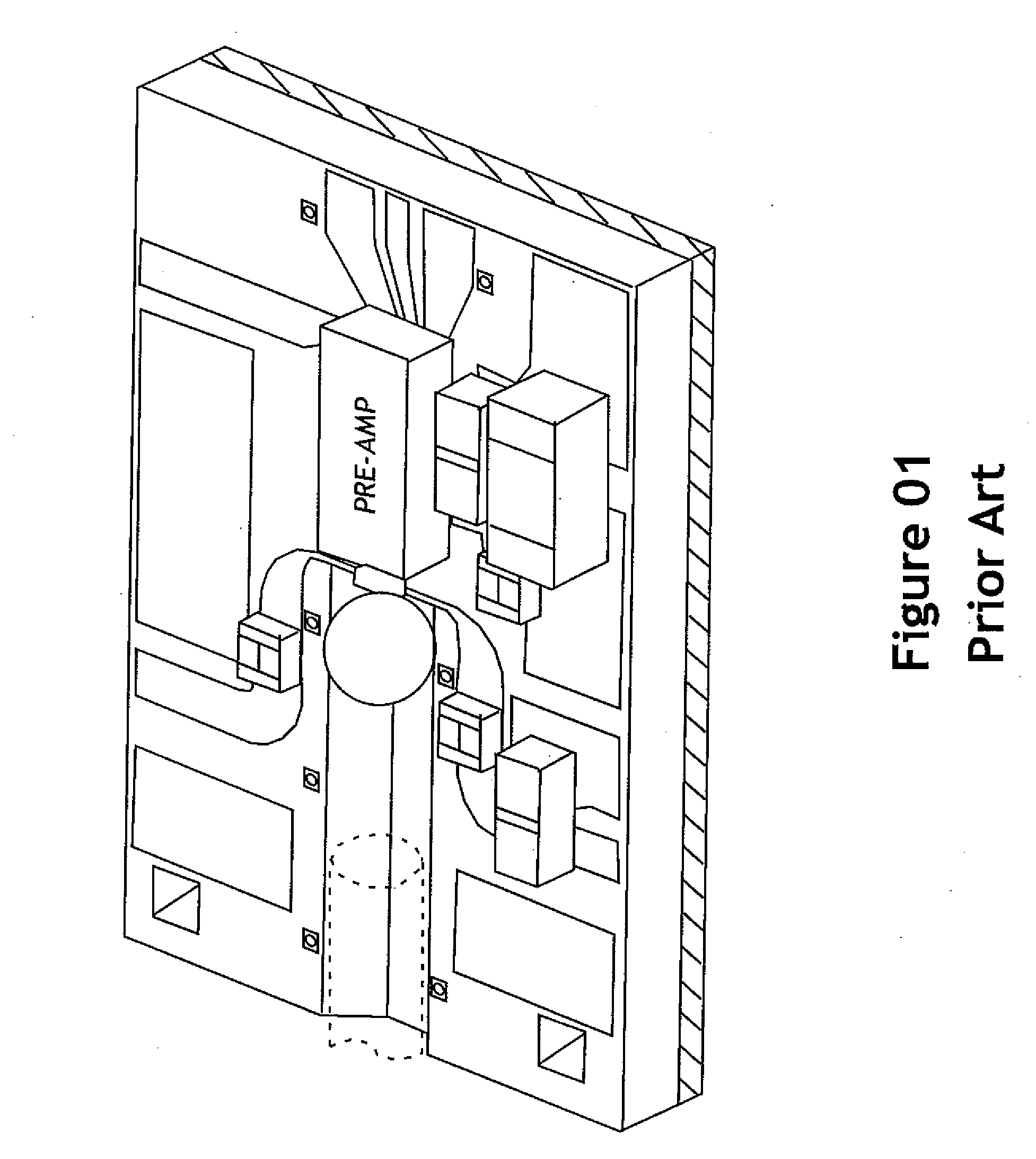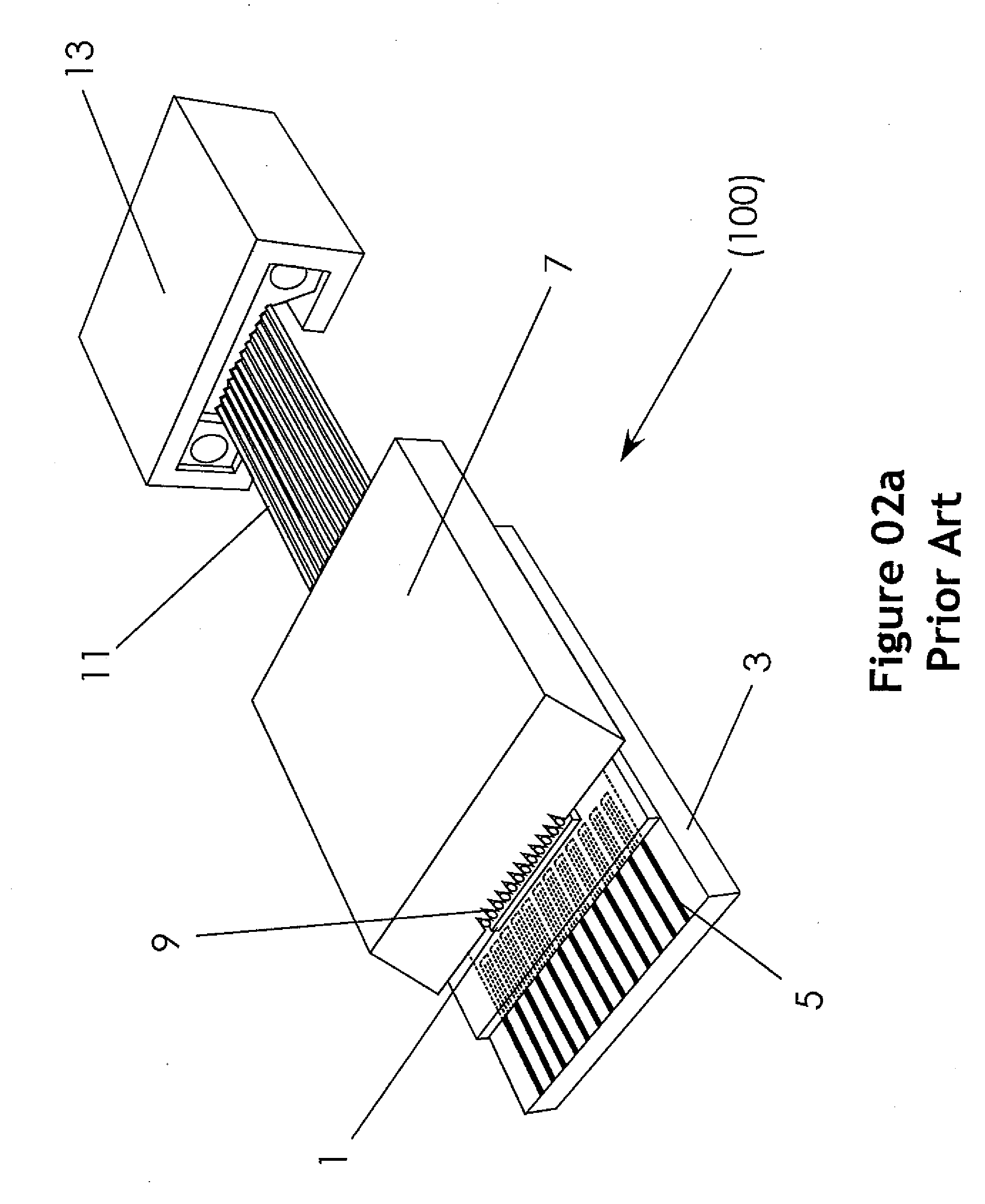Optically-enabled integrated circuit package
a technology of integrated circuits and integrated circuits, applied in the field of integrated circuit (ic) packages, can solve the problems of not addressing the modularity and industry standard form-factor of semiconductors, not efficient use of space, and ever more challenging set of criteria, so as to reduce the rate at which electrical power is consumed by the microchip, reduce the signal conditioning, and increase the data rate
- Summary
- Abstract
- Description
- Claims
- Application Information
AI Technical Summary
Benefits of technology
Problems solved by technology
Method used
Image
Examples
Embodiment Construction
[0065] In the following description of the embodiments, references to the accompanying drawings are by way of illustration of an example by which the invention may be practiced. It will be understood that other embodiments may be made without departing from the scope of the invention(s) disclosed.
[0066] In one embodiment of the present invention, a modified cavity-down ball grid array (BGA) integrated circuit (IC) package is proposed that incorporates mechanical clearances for a modular optical sub-assembly. The optical sub-assembly (OSA) is a modular, low-profile, low-cost component with a standard electrical interface and a standard optical interface and is placed within the IC package between a user defined microchip and the side-face of the IC package. The standard optical interface on the side of the IC package also includes a means to clip or mate (and unmate) an optical patch cable directly to the side of the package. The finished optically enabled BGA IC package can then be...
PUM
 Login to View More
Login to View More Abstract
Description
Claims
Application Information
 Login to View More
Login to View More - R&D
- Intellectual Property
- Life Sciences
- Materials
- Tech Scout
- Unparalleled Data Quality
- Higher Quality Content
- 60% Fewer Hallucinations
Browse by: Latest US Patents, China's latest patents, Technical Efficacy Thesaurus, Application Domain, Technology Topic, Popular Technical Reports.
© 2025 PatSnap. All rights reserved.Legal|Privacy policy|Modern Slavery Act Transparency Statement|Sitemap|About US| Contact US: help@patsnap.com



